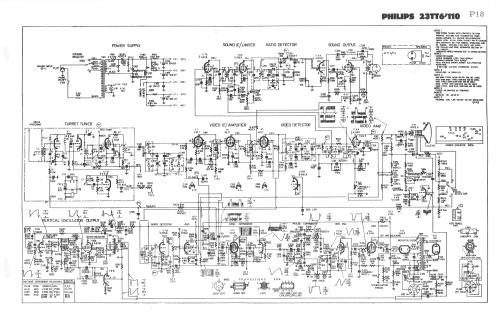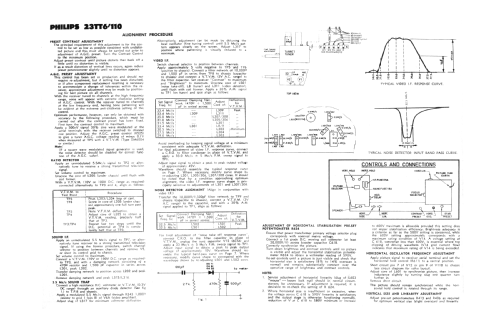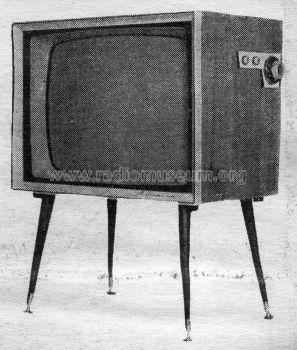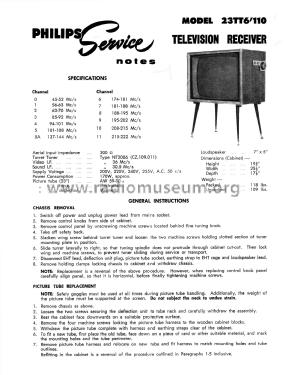23TT6/110
Philips Australia
- País
- Australia
- Fabricante / Marca
- Philips Australia
- Año
- 1961/1962
- Categoría
- Televisión (TV) o monitor
- Radiomuseum.org ID
- 215990
Haga clic en la miniatura esquemática para solicitarlo como documento gratuito.
- Numero de valvulas
- 17
- Válvulas
- 6ES8 6BL8 6BY7 6EJ7 6EJ7 6DX8 6BL8 6BL8 6BM8 6BL8 6CS6 6BM8 6BL8 6CM5 6AL3 1S2 AW59-90 or AW59-30
- Numero de transistores
- Principio principal
- Superheterodino con paso previo de RF; ZF/IF 36000/30500 kHz; 2 Etapas de AF
- Gama de ondas
- VHF/UHF (see notes for details)
- Tensión de funcionamiento
- Red: Corriente alterna (CA, Inglés = AC) / 200; 220; 240; 255 Volt
- Altavoz
- Altavoz elíptico de imán permanente.
- Material
- Madera
- de Radiomuseum.org
- Modelo: 23TT6/110 - Philips Australia
- Forma
- Consola alta, patas más largas del 50% .
- Ancho, altura, profundidad
- 25.5 x 19.75 x 17.5 inch / 648 x 502 x 445 mm
- Anotaciones
-
Philips Model 110
A 23" (59 cm) lowboy TV receiver having 110° aluminised picture tube, 16 valves, eight germanium and two silicon diodes, four voltage-dependent resistors. Cabinet, on legs, with pads for alternative table mounting, finished in maple, or walnut.
Features: aerial input 300 ohms. Turret tuner for 13 channels. Three stage-stage vision IF with frame-grid valves; two sound IF stages with ratio detector giving full fringe performance. DC coupling to picture tube. Noise-gated and delayed AGC, noise gate. Stabilised vertical, horizontal and EHT circuits. Triplex tinted safety screen. Speaker: side mounted, 7" x 5"
Controls: side - channel selector, fine tuning, volume/on-off, brightness/contrast, illuminated channel indicator. (FROM MINGAY'S PRICE SERVICE)
Alternatives to some of the solid state diodes listed may have been used.
The height does not include the legs.
- Peso neto
- 109 lb (109 lb 0 oz) / 49.486 kg
- Precio durante el primer año
- 166.95 AUS £
- Mencionado en
- Mingay's Price Service (Feb 1962.)
- Documentación / Esquemas (1)
- -- Original-techn. papers. (Philips Service Data , December 1961.)
- Documentación / Esquemas (2)
- J.R. Publications Television Service Handbook (L.J. Series Vol. 1, 1962 & 1967, Page P18.)
- Autor
- Modelo creado por Stuart Irwin. Ver en "Modificar Ficha" los participantes posteriores.
- Otros modelos
-
Donde encontrará 916 modelos, 716 con imágenes y 425 con esquemas.
Ir al listado general de Philips Australia



